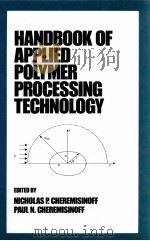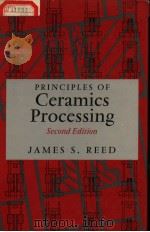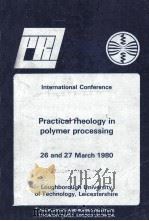《PRINCIPLES OF POLYMER PROCESSING》
| 作者 | ZEHEV TADMOR COSTAS G.GOGOS 编者 |
|---|---|
| 出版 | A WILEY-INTERSCIENCE PUBLICATION JOHN WILEY & SONS |
| 参考页数 | 736 |
| 出版时间 | 没有确切时间的资料 目录预览 |
| ISBN号 | 无 — 求助条款 |
| PDF编号 | 819551498(仅供预览,未存储实际文件) |
| 求助格式 | 扫描PDF(若分多册发行,每次仅能受理1册) |
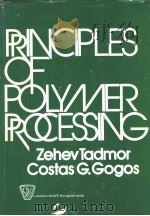
1.Introduction to Polymer Processing1
1.1 Survey of Polymer Processing Methods and Machinery1
1.2 Analysis of Polymer Processing in Terms of Elementary Steps and Shaping Methods22
2 PART Ⅰ STRUCTURE AND PROPERTIES OF POLYMERS31
2.The Nature of Polymers and Plastics31
2.1 Polymers31
2.2 Polymer Additives42
3.Morphology and Structuring of Polymers46
3.1 Definition of Structuring46
3.2 Polymer Single Crystal Morphology49
3.3 Polymer Melt Crystallized Morphology56
3.4 Effects of Crystallization Temperature58
3.5 Effects of Crystallization Pressure64
3.6 Strain and Flow-Induced Crystallization65
3.7 Effects of Cold Drawing70
3.8 Amorphous Polymers73
3.9 Experimental Determination of Polymer Molecular Orientation77
4.Surface Properties87
4.1 Surface Tension87
4.2 Adhesion90
4.3 Tribology91
4.4 Triboelectricity99
5 PART Ⅱ ENGINEERING FUNDAMENTALS105
5.Transport Phenomena105
5.1 The Balance Equations105
5.2 Modeling of Engineering Processes122
5.3 Common Boundary Conditions and Simplifying Assumptions124
5.4 The Lubrication Approximation:Reynolds'Equation126
5.5 Transport and Thermodynamic Properties of Polymers128
6.Polymer Melt Rheology146
6.1 Constitutive Equations146
6.2 Non-Newtonian Behavior of Polymer Melts147
6.3 Polymer Melt Constitutive Equations154
6.4 Linear Viscoelasticity158
6.5 The Generalized Newtonian Fluid(GNF)Equations167
6.6 The Criminale-Ericksen-Filbey(CEF)Equation172
6 7 Experimental Determination of the Viscosity and Normal Stress Difference Coefficients176
6.8 Elongational Flows184
7.Characterization of Mixtures and Mixing196
7.1 Basic Concepts and Mixing Mechanisms197
7.2 Characterization of Mixtures201
7.3 Gross Uniformity205
7.4 Texture208
7.5 The Scale of Segregation and the Scale of Segregation Profile209
7.6 The Intensity of Segregation215
7.7 Characterization of the Mixing Process216
7.8 Distributive Mixing217
7.9 Laminar Mixing217
7.10 Strain Distribution Functions222
7.11 Residence Time Distribution229
7.12 Generalization of Distribution Functions232
7.13 Fluctuation of Composition with Time233
8 PART Ⅲ ELEMENTARY STEPS IN POLYMER PROCESSING243
8.Handling of Particulate Solids243
8.1 The Role of Particulate Solids in Processing243
8.2 Some Unique Properties of Particulate Solids244
8.3 Agglomeration246
8.4 The Mohr Circle of Stresses246
8.5 The Equations of Equilibrium249
8.6 Yield Loci249
8.7 Pressure Distribution in Bins and Hoppers253
8.8 Gravitational Flow in Bins and Hoppers257
8.9 Compaction260
8.10 Flow in Closed Conduits263
8.11 Mechanical Displacement Flow264
8.12 Steady Mechanical Displacement Flow Aided bv Drag266
8.13 Steady Drag Induced Flow in Straight Channels269
9.Melting276
9.1 Classification of Melting Methods276
9.2 The Roles of Geometry*Boundary Conditions*and Physical Proper ties in Melting281
9.3 Conduction Melting Without Melt Removal283
9.4 Solidification or Melting of a Polymer Sheet;Numerical Solution by the Method of Finite Differences293
9.5 Moving Heat Sources303
9.6 Sintering305
9.7 Conduction Melting with Forced Melt Removal307
9.8 Drag Induced Melt Removal308
9.9 Pressure Induced Melt Removal321
9.10 Dissipative Mix-Melting324
10.Pressurization and Pumping333
10.1 Classification of Pressurization Methods334
10.2 Dynamic Viscous Pressurization:Parallel Plate Flow335
10.3 The Screw Pump347
10.4 Dynamic Viscous Pressurization:Non-Parallel Plate Flow360
10.5 Two Rotating Rolls:Calenders and Roll-Mills363
10.6 Dynamic Normal Stress Pressurization372
10.7 Static Mechanical Pressurization and Positive Displacement Flows379
10.8 Plunger-Cylinder379
10.9 Squeezing Flow Between Parallel Disks382
10.10 Gear Pumps386
10.11 Intermeshing Counterrotating Twin Screws389
11.Mixing404
11.1 The Scope of Mixing Operations404
11.2 Classification of Mixers405
11.3 Laminar Mixing of Rheologically Homogeneous Liquids409
11.4 Laminar Mixing of Rheologically Nonhomogeneous Liquids426
11.5 Homogenization432
11.6 Dispersion434
11.7 Motionless Mixers438
11.8 Roll Mills442
11.9 High Intensity Internal Batch Mixers447
11.10 Single Screw Extruders452
12.Modeling of Processing Machines with Elementary Steps467
12.1 The Single Screw Melt Extrusion Process467
12.2 The Single Screw Plasticating Extrusion Process477
12.3 The Diskpack Polymer Processor509
13 PART Ⅳ SHAPING521
13.Die Forming521
13.1 Capillary Flow524
13.2 Elastic Effects in Capillary Flows533
13.3 Fiber Spinning542
13.4 Sheet and Flat Film Forming545
13.5 Tube and Tubular(Blown)Film Forming551
13.6 Wire and Cable Coating560
13.7 Profile Extrusion565
14.Molding and Casting584
14.1 Injection Molding of Polymers584
14.2 Injection Molding of Reacting Polymers610
14.3 Compression Molding619
14.4 Casting624
15.Secondary Shaping632
15.1 Melt Spun Fiber Stretching632
15.2 The Film Blowing Process637
15.3 Analysis of the Free Sheet Blowing(Thermoforming)Process:Elastic Behavior642
15.4 The Thermoforming Process647
15.5 The Blow Molding Process650
16.Calendering661
16.1 The Calendering process661
16.2 Mathematical Modeling of Calendering664
16.3 The Finite Element Method(FEM)669
16.4 Analysis of Calendering with the FEM676
17.A Guide to the Analysis of Polymer Processing in Terms of Elementary Steps and Shaping Methods683
《PRINCIPLES OF POLYMER PROCESSING》由于是年代较久的资料都绝版了,几乎不可能购买到实物。如果大家为了学习确实需要,可向博主求助其电子版PDF文件(由ZEHEV TADMOR COSTAS G.GOGOS A WILEY-INTERSCIENCE PUBLICATION JOHN WILEY & SONS 出版的版本) 。对合法合规的求助,我会当即受理并将下载地址发送给你。
高度相关资料
-

- CONCISE ENCYCLOPEDIA OF POLYMER PROCESSING AND APPLICATIONS
- 1992 PERGAMON PRESS
-

- PRINCIPLES OF RADIOGRAPHIC EXPOSURE AND PROCESSING
- 1977 CHARLES C THOMAS PUBLISHER
-
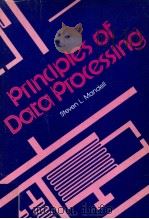
- PRINCIPLES OF DATA PROCESSING
- 1978 WEST PUBLISHING CO
-
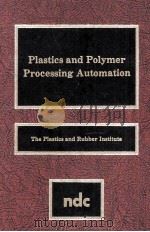
- PLASTICS AND POLYMER PROCESSING AUTOMATION
- 1987 NOYES DATA CORPORATION
-
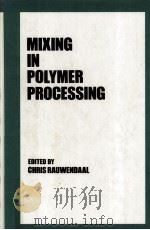
- MIXING IN POLYMER PROCESSING
- 1991 MARCEL DEKKER,INC
-
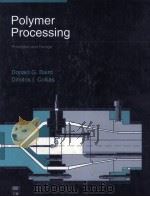
- Polymer Processing Principles and Design
- 1998 JOHN WILEY & SONS
-
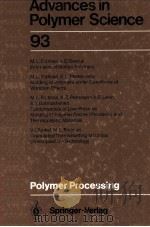
- ADVANCES IN POLYMER SCIENCE 93 Polymer Processing
- 1990 Springer-Verlag
-
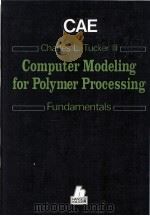
- FUNDAMENTALS OF COMPUTER MODELING FOR POLYMER PROCESSING
- 1989 Oxford University Press
-
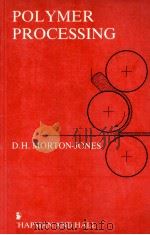
- Polymer Processing
- 1989 CHAPMAN AND HALL
-

- THE ELECTRIC KILN
- 1994 Craftsman House
-

- PRINCIPLES OF POLYMER ENGINEERING RHEOLOGY
- 1990 John Wiley & Sons
提示:百度云已更名为百度网盘(百度盘),天翼云盘、微盘下载地址……暂未提供。➥ PDF文字可复制化或转WORD
